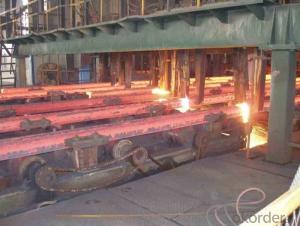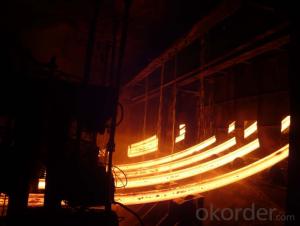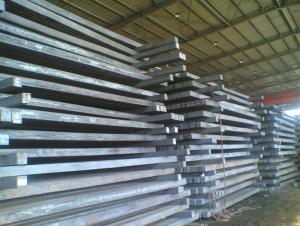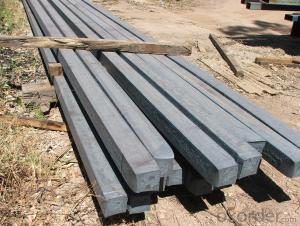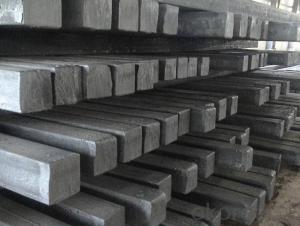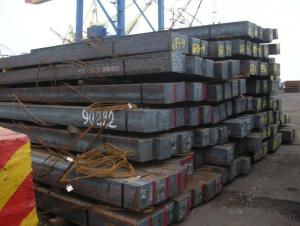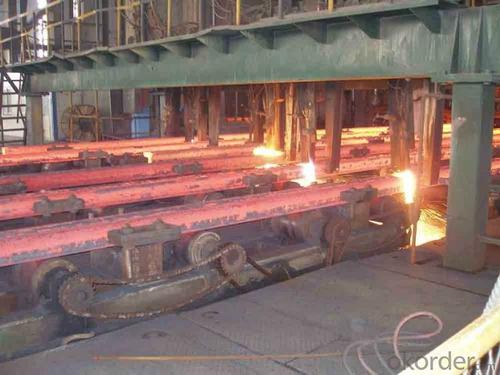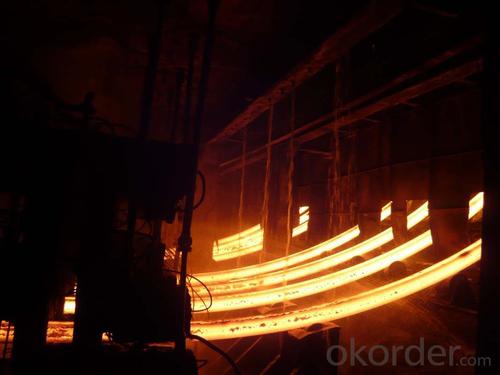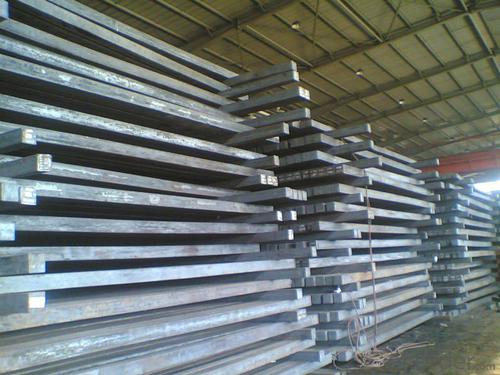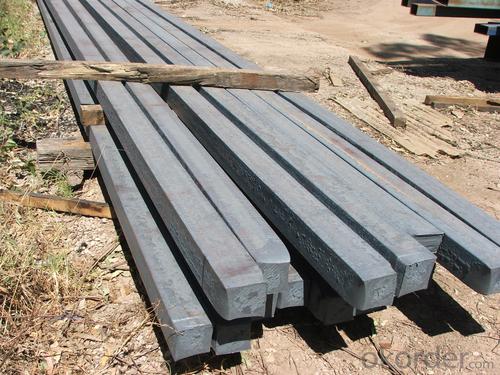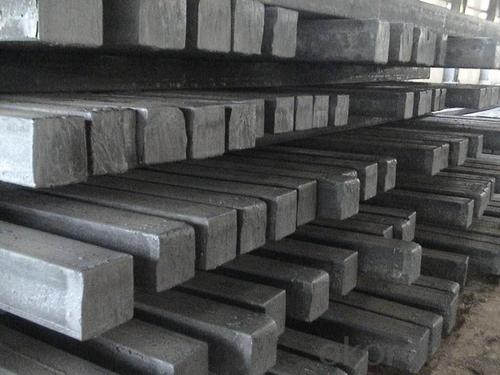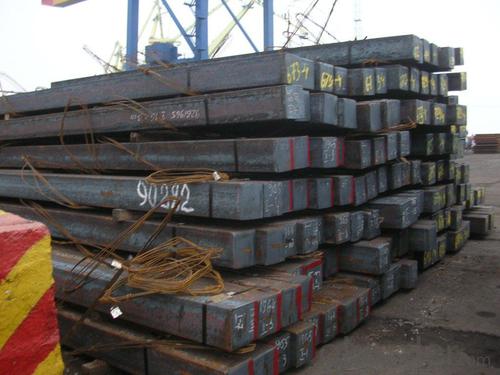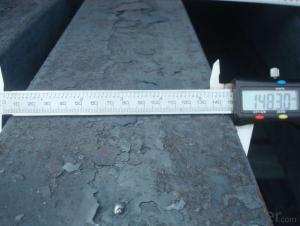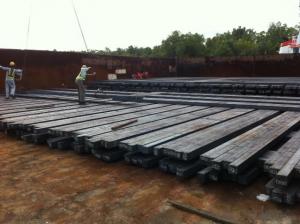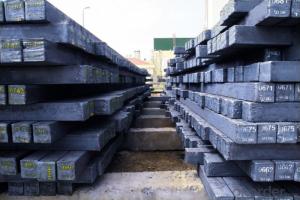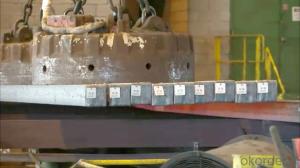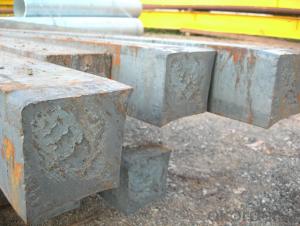Hot Rolled Square Steel Billet 3SP Standard 170mm
- Loading Port:
- Shanghai
- Payment Terms:
- TT OR LC
- Min Order Qty:
- 2000 m.t.
- Supply Capability:
- 10000 m.t./month
OKorder Service Pledge
OKorder Financial Service
You Might Also Like
Structure of Hot Rolled Square Steel Billet 3SP Standard 170mm
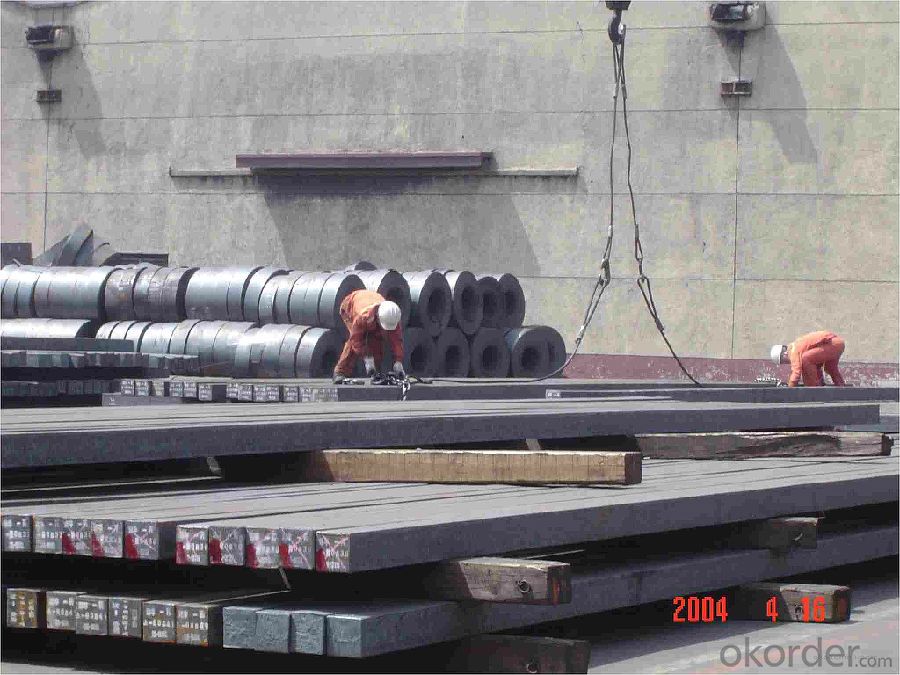
Description of Hot Rolled Square Steel Billet 3SP Standard 170mm
PPGI is made by cold rolled steel sheet and galvanized steel sheets as baseplate, through the surface pretreatment (degreasing, cleaning, chemical conversion processing), coated by the method of continuous coatings (roller coating method),
and after roasting and cooling. Zinc coating: Z60, Z80, Z100, Z120, Z180, Z275, G30, G60, G90
Alu-zinc coating: AZ60, AZ80, AZ100, AZ120, AZ180, G30, G60, G90
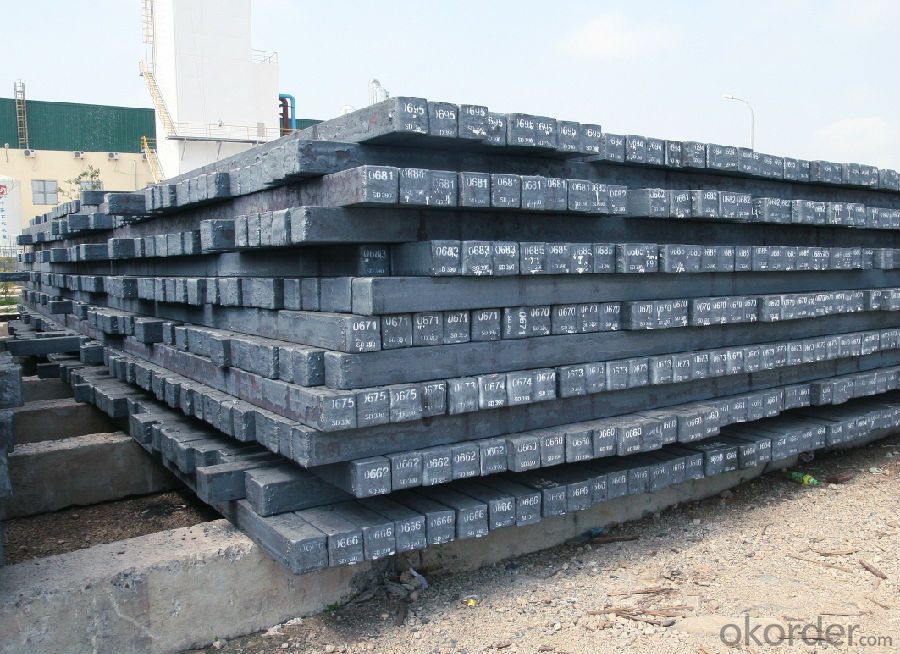
Main Feature of Hot Rolled Square Steel Billet 3SP Standard 170mm
1) Excellent corrosion resistance: The zinc layer provides a good protection of Pre-painted Galvanizeed Steel Sheet.
2) High heat resistance: The reflective surface of the material aids in efficiently reflecting the sunlight away and in turn reducing the amount of heat transmitted. The thermal reflectivity converts into energy savings.
3) Aesthetics: Pre-Painted Galvanized steel sheet is available in plethora of patterns and multiple sizes as per the requirements that given by our customers.
4) Versatility: can be used in the various areas.Standard seaworthy export packing: 3 layers of packing, inside is kraft paper, water plastic film is in the middle and outside GI steel sheet to be covered by steel strips with lock, with inner coil sleeve.
Applications of Hot Rolled Square Steel Billet 3SP Standard 170mm
1) Automotive bodies: filters, fuel tanks, etc.
2) Construction materials: roofings, welding pipes,
3) Electric and electronic appliances: computer cans, etc.
4) Steel cans: containers, etc.
5) Steel furniture: washing machines, refrigerators, microwaves, etc.
6) Drums
7) Office equipment: printer, recorders, etc.
8) Motors and transformers
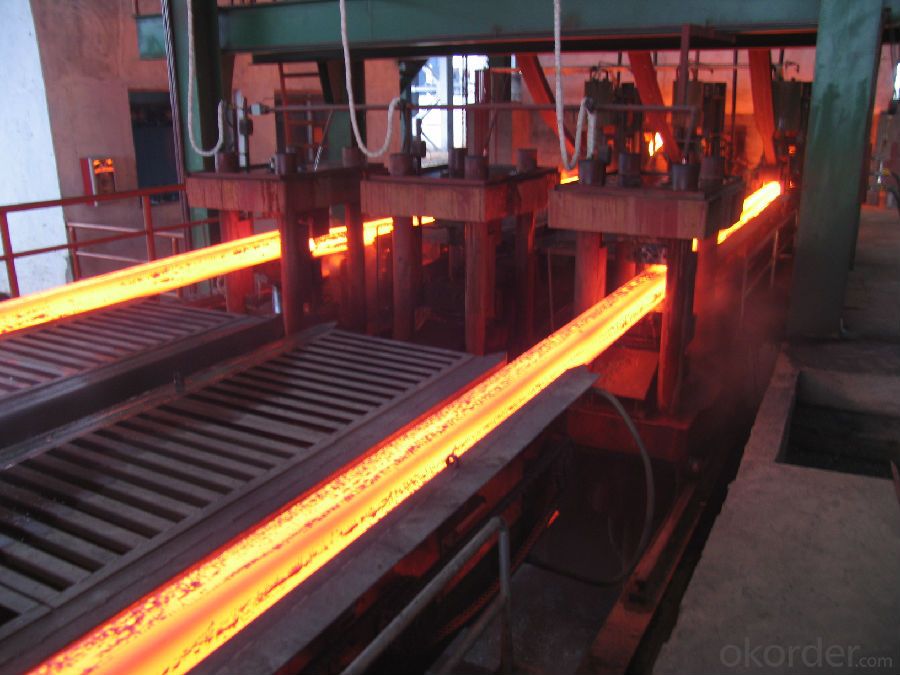
Specifications of Hot Rolled Square Steel Billet 3SP Standard 170mm
| Classified symbol | Yield Point Minimum N/mm2 | Tensile Strength Minimum | Elongation Minimum % | Application | ||||
| N/mm2 | Nominal Thickness mm (t) | |||||||
| JIS | Yogic | 0.25-0.4 | 0.4-0.6 | 0.6-1.0 | 1.0-1.6 | |||
| G3312 | specification | |||||||
| CGCC | CGCC | -205 | -270 | -20 | -21 | -24 | -24 | Commercial |
| CGCD | CGCD | --- | 270 | --- | 27 | 31 | 32 | Drawing |
| --- | CG340 | 245 | 340 | 20 | 20 | 20 | 20 | Structural |
| CGC400 | CG400 | 295 | 400 | 16 | 17 | 18 | 18 | Structural |
| CGC440 | CG440 | 335 | 440 | 14 | 15 | 16 | 18 | Structural |
| CGC490 | CG490 | 365 | 490 | 12 | 13 | 14 | 16 | Structural |
| CGC570 | CG570 | 560 | 570 | --- | --- | --- | --- | Structural |
| ASTM Designation | Yield Point Minimum | Tensile Strength Minimum | Elongation Minimum % | Application | Q/BQB 445-2004(China standard) | ASM A653/A653M | JISG 3312 | |
| ksi(MPa) | ksi(MPa) | TDC51D+Z | (CS TYPE A+Z) | CGCC | ||||
| A653(M)-99 CS TYPE A,B,C | --- | --- | --- | Commercial | TDC52D+Z | CGCD | ||
| A653(M)-99 FS | --- | --- | --- | Lock Forming | TS250GD+Z | (G250+Z) | - | |
| A653(M)-99 DS | --- | --- | --- | Drawing | TS300GS+Z | (G300+Z) | CGC 400 | |
| A653(M)-99 SS Grade33(230) | 33(230) | 45(310) | 20 | Structural | TS350GD+Z | (G350+Z) | CGC490 | |
| A653(M)-99 SS Grade37(255) | 37(255) | 52(360) | 18 | Structural | TS550GD+Z | (G550+Z) | CGC570 | |
| A653(M)-99 SS Grade40(275) | 40(275) | 55(380) | 16 | Structural | ||||
| A653(M)-99 SS Grade50(345) | 50(345) | 65(450) | 12 | Structural | ||||
| A653(M)-99 SS Grade80(550) | 80(550) | 82(570) | --- | Structural | ||||
FAQ of Hot Rolled Square Steel Billet 3SP Standard 170mm
We have organized several common questions for our clients,may help you sincerely:
1. How Can I Visit There?
Our company is located in Tianjin City, China, near Beijing. You can fly to Tianjin Airport Directly. All our clients, from home or aboard, are warmly welcome to visit us!
2. How Can I Get Some Sample?
We are honored to offer you sample.
3. Why choose CNBM?
1, ISO, BV, CE, SGS approved.
2, Competitive price and quality.
3, Efficient service team online for 24 hours.
4, Smooth production ability(50000tons/month) .
5, quick delivery and standard exporting package.
6, Flexible payment with T/T, L/C, Paypal, Kunlun bank, etc.
- Q: How are steel billets used in the manufacturing of fasteners and fittings?
- Steel billets are an essential raw material in the manufacturing of fasteners and fittings. Fasteners, such as bolts, screws, and nuts, are used to hold two or more components together securely. Fittings, on the other hand, are used to connect or join different parts of a structure or system. To manufacture fasteners and fittings, steel billets undergo several processes. Initially, the billets are heated to a high temperature to make them malleable. This heating process, known as hot rolling, allows the steel billets to be shaped into the desired form. The billets are then passed through a series of rollers, which gradually reduce their thickness and increase their length. This process transforms the billets into long, slender rods known as wire rods. The wire rods are subsequently cold drawn or cold rolled to further refine their shape and dimensions. This process improves the surface finish and increases the strength of the rods. The cold drawing or rolling process results in the formation of wires with precise diameters, which are then used to manufacture fasteners such as screws, bolts, and nuts. The wires are cut into specific lengths and threaded to create the necessary grooves and patterns required for fastening. The threads on the wires allow them to be easily screwed into or onto other components, providing a secure and reliable connection. The shape and size of the threads are crucial as they determine the compatibility of the fasteners with different applications. For fittings, the wire rods are subjected to additional processes such as machining, bending, or welding. Machining involves cutting the wire rods into specific shapes and sizes using various cutting tools. Bending allows the wire rods to be shaped into different angles or curves to fit the desired configuration of the fittings. Welding is employed to join multiple wire rods or other components together to create complex fittings. Once the fasteners and fittings are manufactured, they undergo quality control tests to ensure they meet the required standards for strength, durability, and dimensional accuracy. These tests include checking for proper threading, hardness, and resistance to corrosion. In summary, steel billets are extensively used in the manufacturing of fasteners and fittings. Through processes like hot rolling, cold drawing or rolling, threading, and various shaping techniques, steel billets are transformed into wires and then further processed to create a wide range of fasteners and fittings that are crucial for construction, machinery, automotive, and other industries.
- Q: How do steel billets contribute to the manufacturing of consumer goods?
- Steel billets are a crucial raw material in the manufacturing of consumer goods as they serve as the base material for various steel products. These billets are used in processes such as forging, rolling, and extrusion to produce a wide range of consumer goods, including appliances, automobiles, construction materials, and machinery. The versatility, strength, and durability of steel make it an ideal choice for manufacturing consumer goods, and steel billets form the foundation for creating these high-quality and long-lasting products.
- Q: Can steel billets be painted or coated for decorative purposes?
- Yes, steel billets can be painted or coated for decorative purposes. The surface of steel billets can be prepared and treated to ensure proper adhesion of paint or coating, allowing for customization and enhancing their appearance for decorative applications.
- Q: What are the different surface treatments applied to stainless steel billets?
- There are several different surface treatments that can be applied to stainless steel billets, depending on the desired outcome and application. Some common treatments include passivation, pickling, electropolishing, and blasting. Passivation helps to improve corrosion resistance by removing any free iron from the surface. Pickling involves the use of acids to remove impurities and oxide layers from the surface. Electropolishing is an electrochemical process that provides a smooth and shiny finish. Blasting, on the other hand, involves using abrasive particles to remove surface contaminants and create a textured finish. These treatments can enhance the appearance, cleanliness, and durability of stainless steel billets for various industrial applications.
- Q: How are steel billets used in the manufacturing of automotive components?
- The manufacturing of automotive components heavily relies on steel billets, which serve as essential raw materials. These billets, being semi-finished products, undergo shaping into various forms to create the necessary components. To start with, steel billets are heated to a specific temperature, rendering them malleable and easier to manipulate. Once they reach the desired temperature, they are then placed into molds or dies and subjected to intense pressure to achieve the desired form. This entire process is commonly referred to as forging. When it comes to automotive components like engine parts, gears, axles, and suspension components, high strength and durability are crucial requirements. Steel billets are preferred for these applications due to their outstanding mechanical properties, including high tensile strength, toughness, and wear resistance. Following the forging process, the shaped billets undergo further processing utilizing various techniques such as machining, heat treatment, and surface finishing. These procedures are crucial in ensuring that the components meet the necessary performance standards, dimensional accuracy, and surface quality demanded by automotive manufacturers. The utilization of steel billets in the manufacturing of automotive components offers numerous advantages. Steel is easily accessible, cost-effective, and boasts a high recycling rate, making it an environmentally friendly choice. Additionally, steel's versatility allows for a wide range of component designs and customization options, catering to specific automotive requirements. To conclude, the significance of steel billets in the manufacturing of automotive components cannot be overstated. Their malleability and exceptional mechanical properties make them an ideal raw material for forging processes, enabling the production of high-strength and durable components used across various automotive applications.
- Q: How do steel billets contribute to the aerospace industry?
- Steel billets are an essential component in the aerospace industry as they serve as the raw material for manufacturing various critical parts and components. These billets are used to produce high-strength and lightweight steel alloys that are crucial for aircraft structures, such as fuselages, wings, and landing gears. The superior strength and durability of steel billets allow for the construction of robust and reliable aircraft, ensuring safety and performance in demanding aerospace operations.
- Q: How are steel billets rolled or forged into other shapes?
- Steel billets can be rolled into other shapes through a process called hot rolling, where the billet is heated and passed through a series of rollers that apply pressure to shape it into the desired form. Alternatively, forging involves applying compressive forces to the heated billet, either manually or by using a machine, to reshape it into the desired shape.
- Q: How are steel billets used in the manufacturing of agricultural machinery?
- Steel billets are often used as a starting material in the manufacturing process of agricultural machinery. They are typically shaped and transformed through various machining and forging techniques to create different components like gears, shafts, brackets, and frames. These components are then assembled to build the necessary machinery for farming operations, such as tractors, tillers, harvesters, and irrigation systems. The use of steel billets ensures durability, strength, and reliability in agricultural machinery, making them capable of withstanding the demanding conditions and heavy workloads often encountered in the agricultural industry.
- Q: What are the different types of cutting methods used for steel billets?
- There are several different types of cutting methods used for steel billets, including sawing, shearing, flame cutting, and water jet cutting.
- Q: What are the different shapes and sizes of steel billets?
- Steel billets come in various shapes and sizes, including square, round, rectangular, and hexagonal. The sizes of steel billets can range from small dimensions, such as 100mm x 100mm, to larger dimensions, such as 400mm x 400mm. These different shapes and sizes of steel billets serve different purposes and can be used in various industries, including construction, manufacturing, and automotive.
Send your message to us
Hot Rolled Square Steel Billet 3SP Standard 170mm
- Loading Port:
- Shanghai
- Payment Terms:
- TT OR LC
- Min Order Qty:
- 2000 m.t.
- Supply Capability:
- 10000 m.t./month
OKorder Service Pledge
OKorder Financial Service
Similar products
Hot products
Hot Searches
Related keywords
